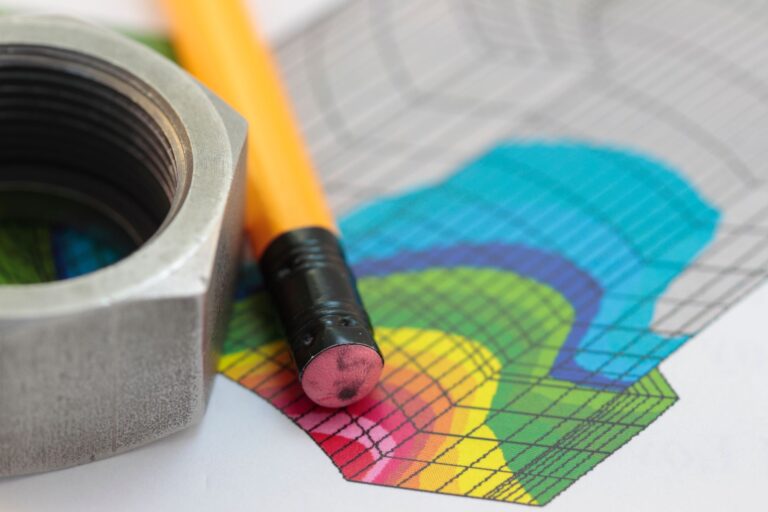FEA Isn’t Just for Validation—Here’s a Smarter Way to Simulate
April 2, 2025

Written By:
Eric VandenBrink | Mechanical Engineer

Finite Element Analysis (FEA) is a powerful engineering analysis technique that helps engineers predict how products or components will perform under real-world conditions. By breaking complex structures into smaller, manageable elements, it evaluates factors like stress, heat, and vibration before building a physical prototype.
It’s likely that you (or your team) are already running FEA simulations, so I didn’t write this article to explain what those are or why you should do them. Instead, I want to provide a framework for how and when you can use FEA simulations to get more value from them.
How FEA Is Commonly Used & Why It’s a Problem
I frequently see companies waiting too long to integrate FEA into their workflow. They treat it as a last-minute validation step rather than an integral part of the design process.
The problem with this “check-the-box” mentality is it often results in compressed timelines and forced compromises when critical issues arise too late to be addressed properly. When design teams take too long and FEA is rushed, they’re forced to “hope” the analysis is wrong instead of making the necessary design corrections.
All of this can lead to less-than-ideal (or complete failure) products and costly, rushed redesigns.
A More Proactive Approach to FEA Simulations
To get the most value out of FEA, I recommend you integrate it early and iteratively throughout the design process. Here’s a three-part walkthrough of what that might look like.
1. Early Integration
Bringing FEA into the design process as early as possible allows for quick, high-level studies that guide initial direction. By running quick, basic simulations early, you can identify major design issues before significant time and money are invested. Simple single-part analyses and basic studies help set the right design direction from the start, reducing the likelihood of costly rework later.
2. Parallel Workflow
From there, continue to run FEA simulations concurrently with CAD development. With each design iteration, add more simulation detail to increase accuracy. You want the simulation to mature as your design matures.
This iterative process ensures that every design decision is informed by simulation data, leading to better products and fewer last-minute changes.
Beyond structural analysis, it’s important in these middle stages to remember that great designs aren’t just about performance; they must also be manufacturable. When running iterative FEA simulations, consider real-world factors such as manufacturing processes, cycle times, and production volumes.
For example, a component produced at 500,000 units per year has different requirements than a low-volume custom component. By incorporating these factors early, you can optimize designs for efficiency and cost-effectiveness.
3. Final Validation Before Tool Kickoff
Before finalizing a design and committing to expensive tooling, you should conduct a final simulation to ensure all design and manufacturing inputs are accounted for. This high-input, high-accuracy validation step is the last check to prevent last-minute surprises and ensure the product will perform as expected in real-world applications.
Like I mentioned earlier, many engineers are already doing this final validation. The problem is they’re only taking this step and failing to incorporate FEA earlier in the process, so their results often turn up a lot of problems they don’t have time to fix.
The Benefits of an Early & Iterative FEA Process
By integrating FEA into your design process strategically, you can get so much more value.
- Reduced development time and costs – Catching issues early can reduce the need for costly redesigns and accelerate your time to market.
- Improved product performance and reliability – Comprehensive analysis ensures that designs meet all performance and durability requirements before production begins.
- Greater innovation – Simulation allows for more ambitious design changes and optimizations, rather than small, incremental tweaks.
- Data-driven decision making – Design choices are backed by quantitative data rather than assumptions or guesswork.
- Deeper understanding of product behavior – Physical testing often reveals only where a part fails, but FEA can show how and why it happens.
Enhance Your Product Design & Analysis Process
If you want to create better, more reliable products while reducing development risks, FEA should be an integral part of your design process—not just a last-minute check. By incorporating it early, iterating often, and using it to drive data-backed decisions, you’ll set yourself up for success and push the boundaries of what’s possible in engineering design.
Need help with FEA or other computer-aided engineering (CAE) techniques? We have a team of engineers available to help. Contact us online to learn more.
